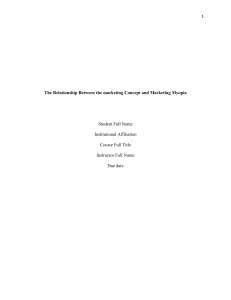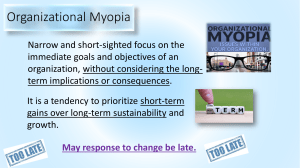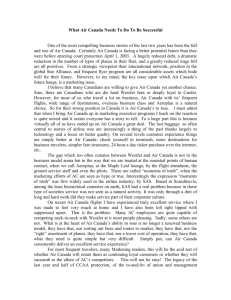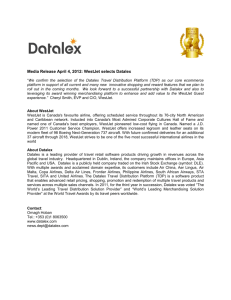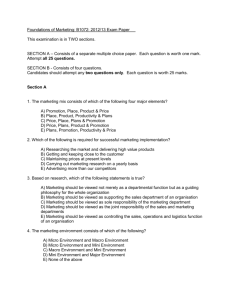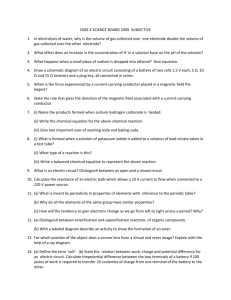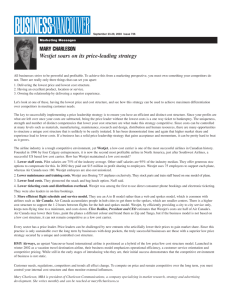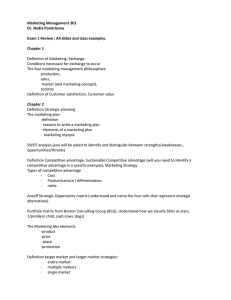Marketing Management 2. Ted Levitt: Marketing Myopia
advertisement
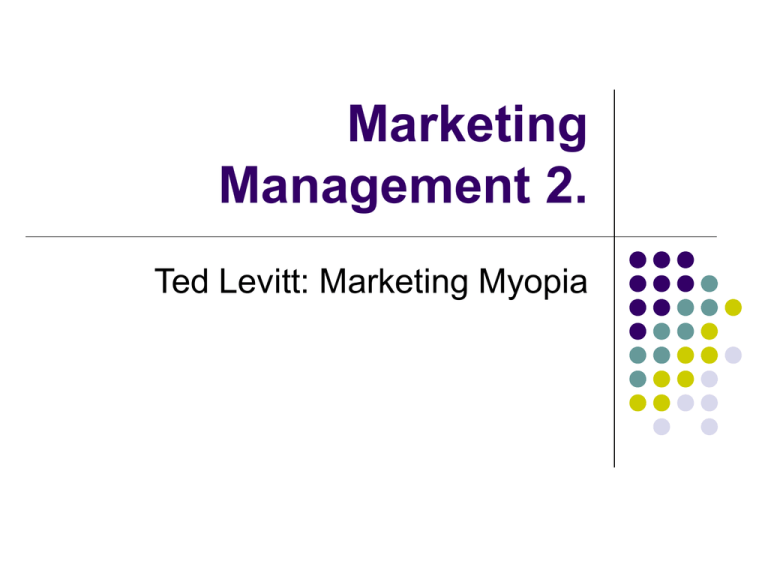
Marketing Management 2. Ted Levitt: Marketing Myopia The Future according to Chambers and Grove John Chambers (Cisco) Everything changes, so managers and firms must change too Technological Revolution Globalization: flexible manufacturing, educated (skilled) work force, supportive governments Internet: every firm must incorporate it for survival Competitiveness through Speed (flexibility), Human Talent, and Branding Andy Grove (Intel) Information society minimizes competitive advantages Competitiveness through human talent, systematic teamwork and satisfied employees Theodore (Ted) Levitt Managers are often myopic (shortsighted) It means, their brands, divisions, firms, or even whole industries became obsolete Levitt thinks that top managers should be blamed for any strategic failure Myopia: Shadow of Obsolescence Every industry starts out as a growth industry Dry cleaning; Electric utilities; Grocery stores Need for strategic vision at least to follow changes Wrong beliefs: Myopia: The Population Myth Growth is assured by a growing population of customers? Is there a competitive substitute product out there? Myopia: Production Pressures What Ford put first: Reducing the Price because no costs should be considered as “fixed” It pressures employees to keep costs down Expanding Production Improving the Product Myopia: Creative Destruction The shadow of obsolescence and the population myth threatens every industry How to be competitive in the long-run? What does Microsoft do? Managers will face decisions like eliminating existing products, brands, divisions in order to develop (create) new ones Myopia: Dangers of R&D Paying too much attention to R&D? High-tech products: management becomes top-heavy with engineers Selective bias: products themselves become the primary focus in marketing Solutions recommended: Strategic Terms Strategy: developing and using available resources to accomplish company’s goals in a competitive arena Strategic Marketing Plan: a document describing strategic objectives and the ways to achieve them in terms of competitive activities 1. Mission: definition of business(es) the company operates in (“we serve the health-conscious food customers”) 2. Vision: the desired image of the company in the mind of its employees (“we want to be the best”) 3. Positioning: the desired image of the company’s products / services / brands in the mind of the targeted customers Fun, Canadian, and “off-the-wall” WestJet's mission and vision There is something special about WestJet's culture. It's a company with a unique corporate spirit... a close knit family that's building something legendary... and in the process changing the world. Our mission: To enrich the lives of everyone in WestJet's world by providing safe, friendly, affordable air travel. Our vision: WestJet will be the leading low-fare airline that: People want to work with... Customers want to fly with... and Shareholders want to invest with.


